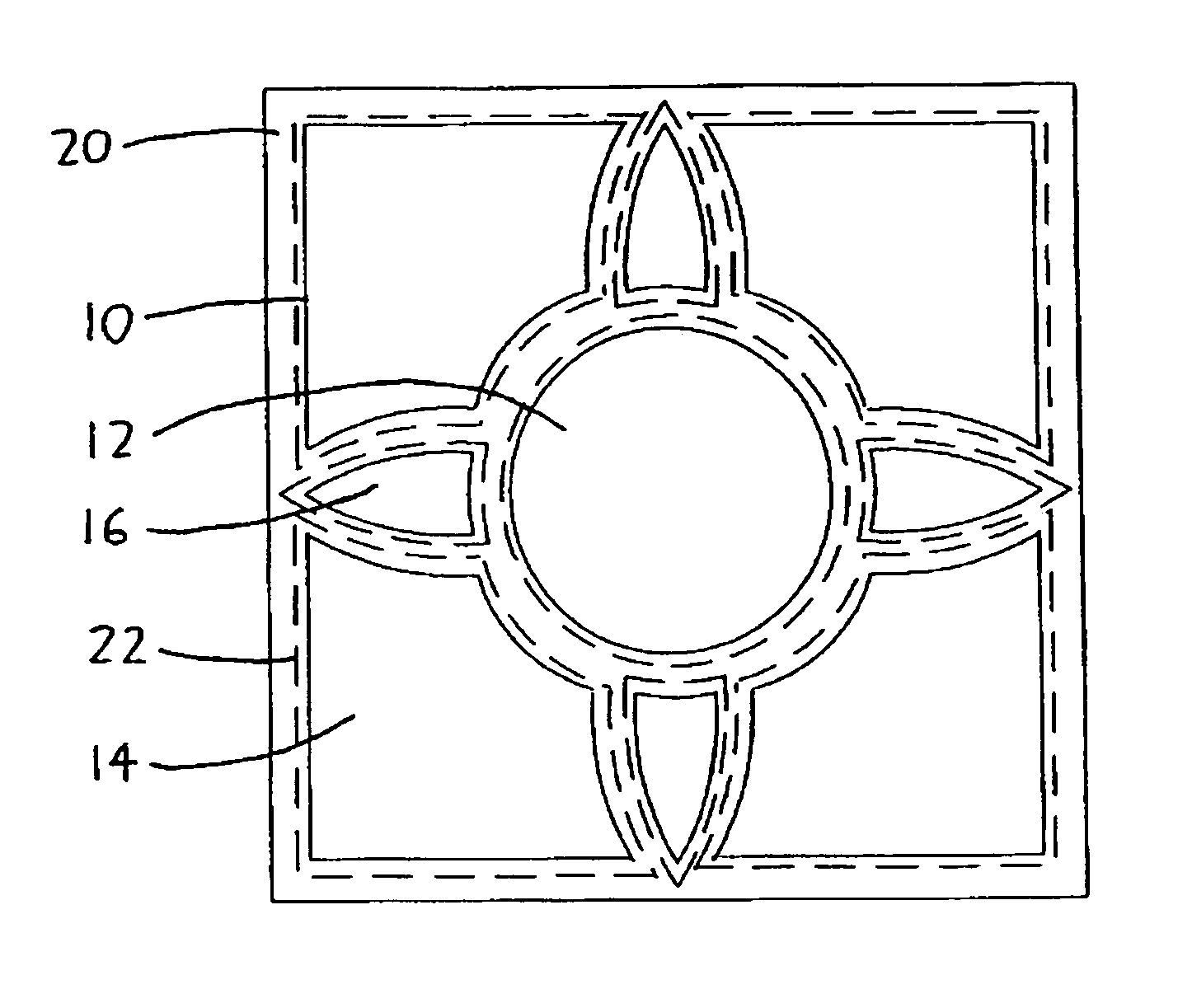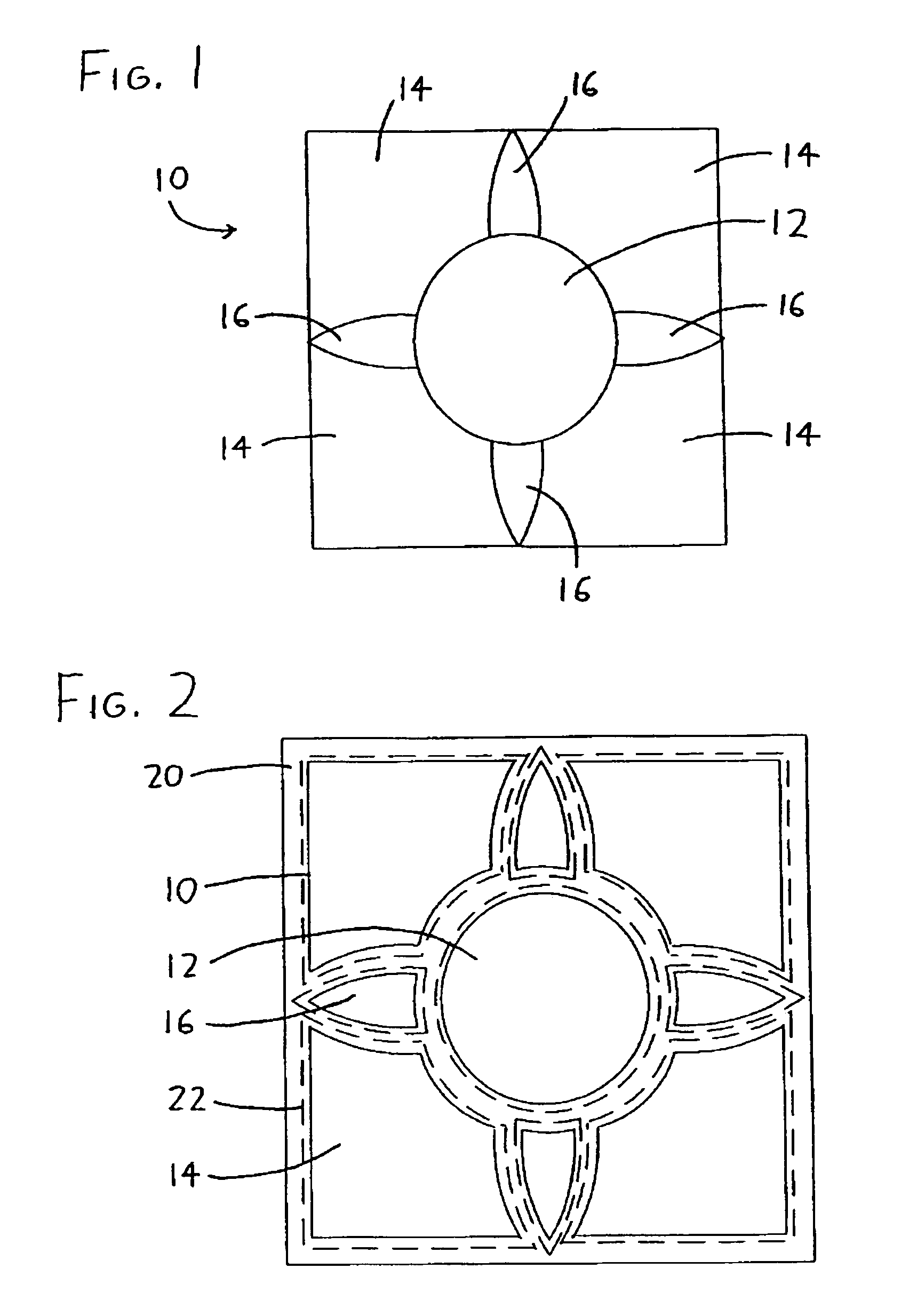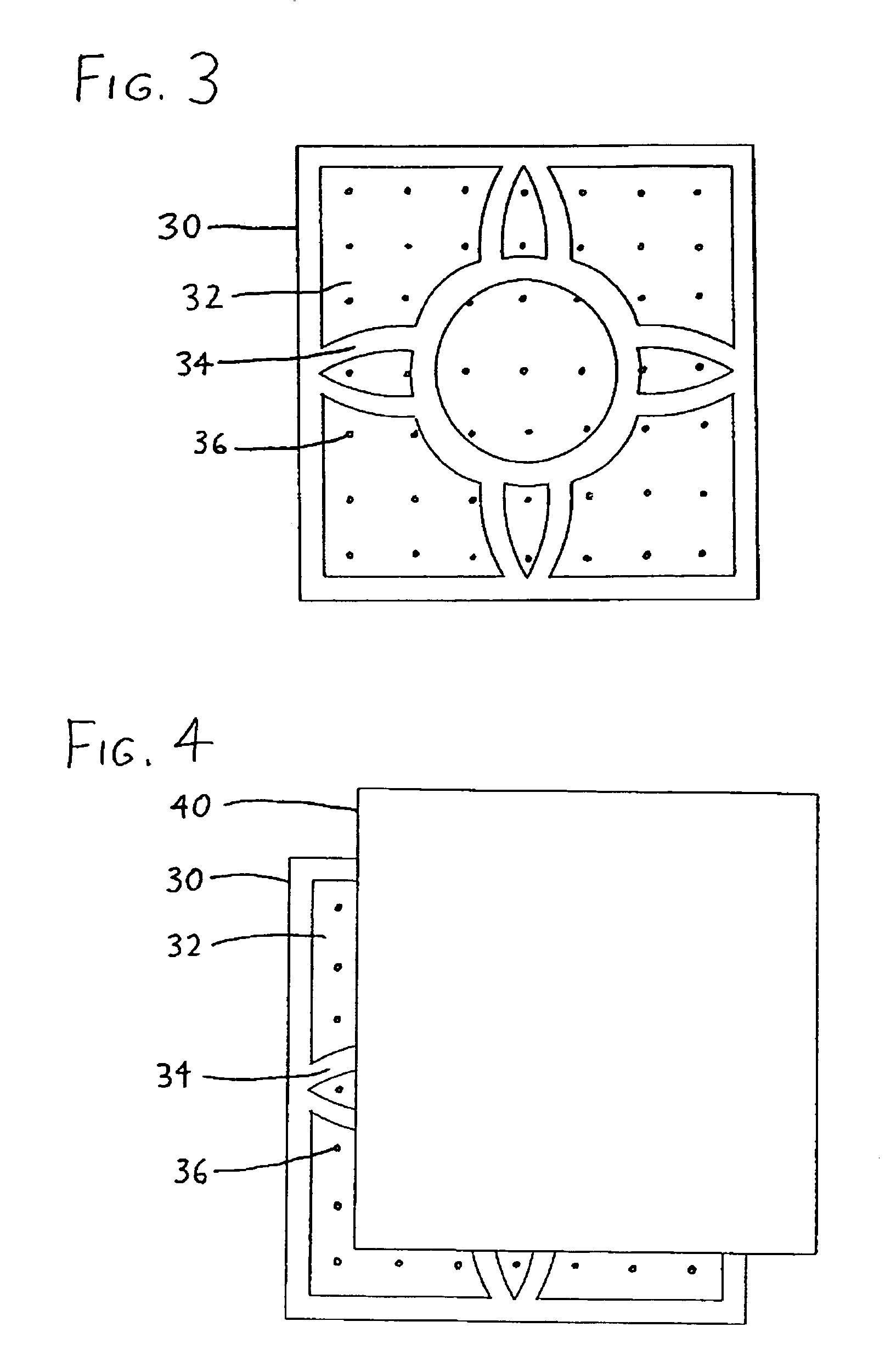Custom manufacture of tiles for use with preexisting mass-manufactured tiles
a technology for mass-manufactured tiles and custom tiles, which is applied in the field of tile manufacturing, can solve the problems of reducing the appearance of the floor, so as to avoid irregular appearance/wear and gapping/ledging problems, and reducing the size of the floor. , the effect of reducing the gapping and ledging
- Summary
- Abstract
- Description
- Claims
- Application Information
AI Technical Summary
Benefits of technology
Problems solved by technology
Method used
Image
Examples
Embodiment Construction
[0026]One version of the invention will now be described with reference to FIGS. 1–6, which illustrate preferred steps used to manufacture a decorative tile set for use in conjunction with standard laminate flooring. Referring particularly to FIG. 1, a user first prepares a design for the decorative tile set. FIG. 1 illustrates an exemplary tile set design 10 having nine tiles therein. While the overall tile set design 10 has a square boundary, thereby making it readily fittable alongside standard preexisting laminate flooring planks, the boundaries of the individual tiles within the design have an irregular shape (with “irregular” here meaning that the tiles include non-perpendicular angles and / or non-parallel sides), including a central medallion 12, corner pieces 14, and intermediate pieces 16. Most preferably, the tile set design 10 is prepared on standard computer aided design (CAD) software. The tile set design 10 represents only the boundaries of the tile set and its individu...
PUM
| Property | Measurement | Unit |
|---|---|---|
| Force | aaaaa | aaaaa |
| Structure | aaaaa | aaaaa |
| Area | aaaaa | aaaaa |
Abstract
Description
Claims
Application Information
 Login to View More
Login to View More - R&D
- Intellectual Property
- Life Sciences
- Materials
- Tech Scout
- Unparalleled Data Quality
- Higher Quality Content
- 60% Fewer Hallucinations
Browse by: Latest US Patents, China's latest patents, Technical Efficacy Thesaurus, Application Domain, Technology Topic, Popular Technical Reports.
© 2025 PatSnap. All rights reserved.Legal|Privacy policy|Modern Slavery Act Transparency Statement|Sitemap|About US| Contact US: help@patsnap.com



